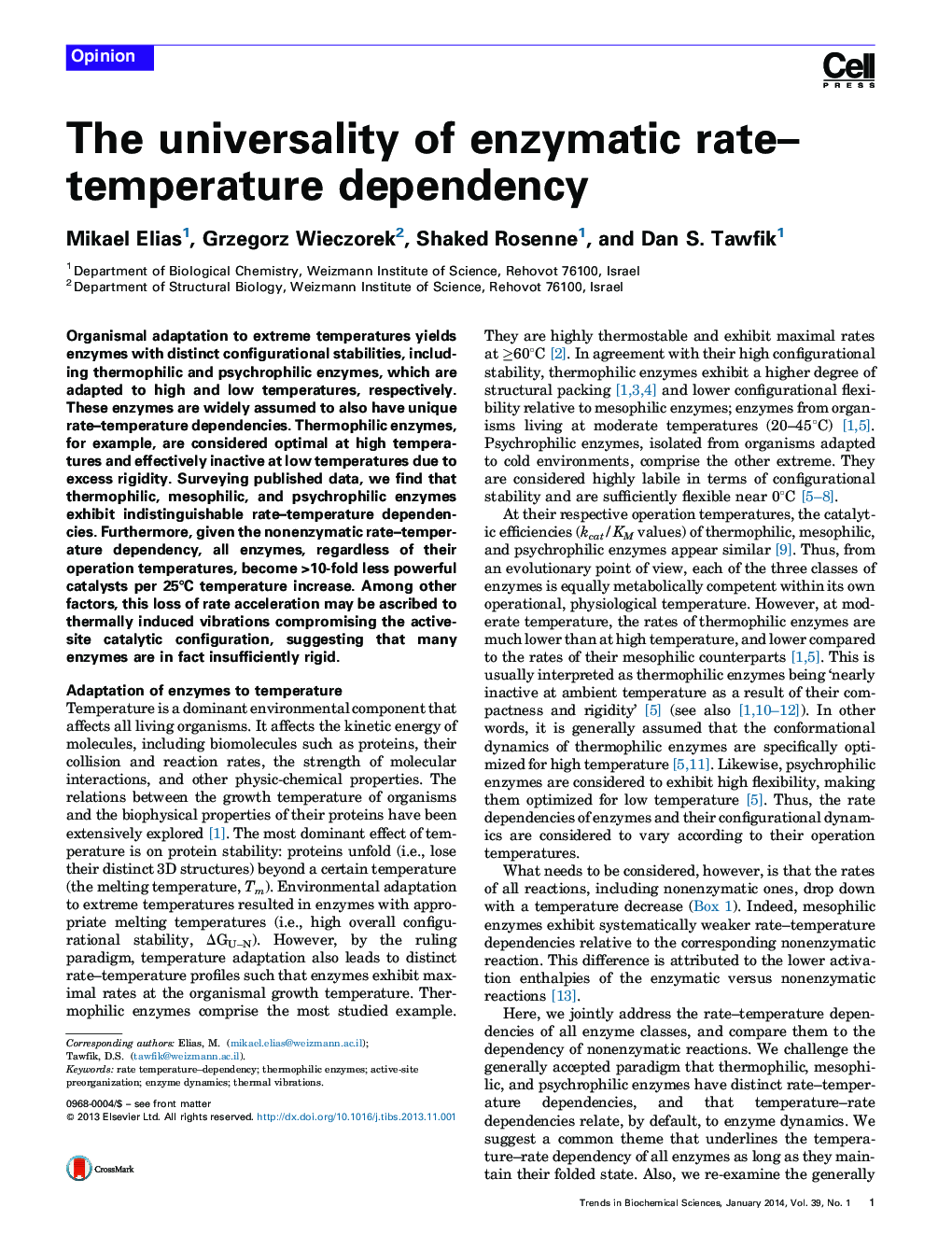| Article ID | Journal | Published Year | Pages | File Type |
|---|---|---|---|---|
| 2030773 | Trends in Biochemical Sciences | 2014 | 7 Pages |
•Thermophilic, psychrophilic, and mesophilic enzymes show same rate–temperature dependency.•Given nonenzymatic rates, all enzyme classes lose catalytic power with temperature.•Loss of catalytic power could be due to temperature-induced active-site vibrations.
Organismal adaptation to extreme temperatures yields enzymes with distinct configurational stabilities, including thermophilic and psychrophilic enzymes, which are adapted to high and low temperatures, respectively. These enzymes are widely assumed to also have unique rate–temperature dependencies. Thermophilic enzymes, for example, are considered optimal at high temperatures and effectively inactive at low temperatures due to excess rigidity. Surveying published data, we find that thermophilic, mesophilic, and psychrophilic enzymes exhibit indistinguishable rate–temperature dependencies. Furthermore, given the nonenzymatic rate–temperature dependency, all enzymes, regardless of their operation temperatures, become >10-fold less powerful catalysts per 25°C temperature increase. Among other factors, this loss of rate acceleration may be ascribed to thermally induced vibrations compromising the active-site catalytic configuration, suggesting that many enzymes are in fact insufficiently rigid.
